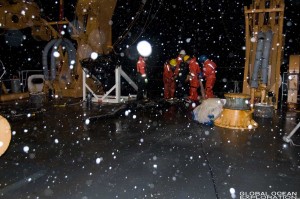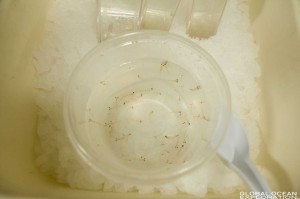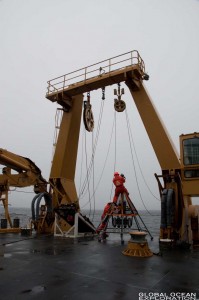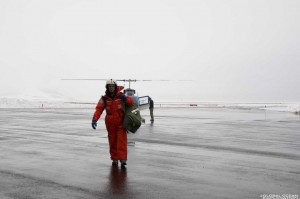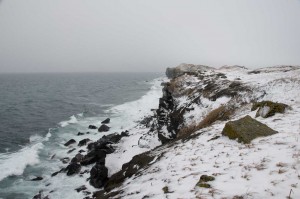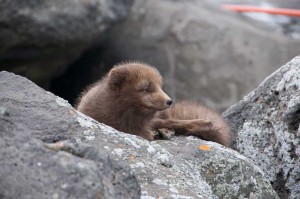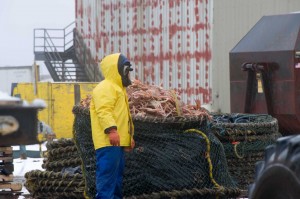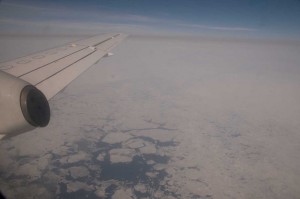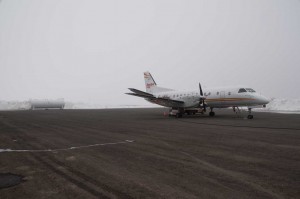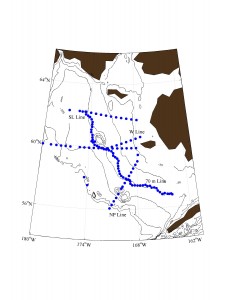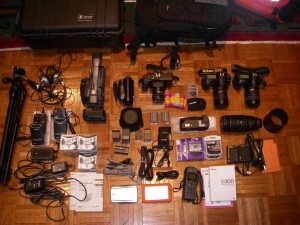I decided to go to sleep last night for a little bit and wake up at 0530 for a net tow at 0600. Science happens around the clock on a research ship. Most scientists work in shifts, one group taking the night shift while the other takes the day shift, noon to midnight or midnight to noon. Â
I make my way on deck in the darkness and it is snowing lightly as the nets are being deployed. The nets are filled with phytoplankton making sorting through the animals difficult. Along our way in the open water, we came to area of high productivity for the first time in the cruise. All of the scientists were keen on sampling it. The net tows along with all of the plankton brought up krill, copepods and a variety of other zooplankton. Zooplankton is a key link in the food chain between the phytoplankton and larger fish. The research being done on this cruise is focused on how the various levels of the food chain interact in the Bering Sea and how the ice affects these interactions. The plankton collected in these tows will be used for various experiments from krill growth to copepod feeding rates.Â
Â
“Net Tow in the Snow”
Â
“Krill”
Â
Later on in the morning, the benthic scientists (they study the sediment on the bottom of the sea floor) deployed what is called a multi-core. This multi-core takes multiple cores of the bottom sediment and brings it up to the surface without disturbing the layers. Once the cores are gathered, various experiments will be performed on them. The multi-core team will spend hours carefully processing these samples (I will highlight this research in an upcoming post.)
Â
Â
After the station was finished, we began transiting to our next station. The seas are rough but the Healy cruises along smoothly with only a gentle roll. The sun tried to peak out in the late morning and I continued to explore the ship.Â
Â
Â

